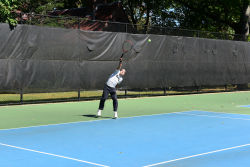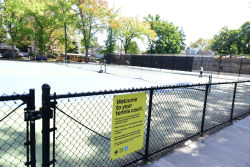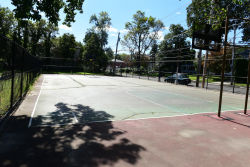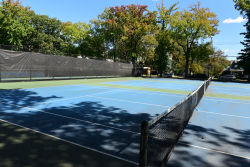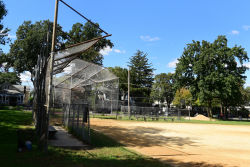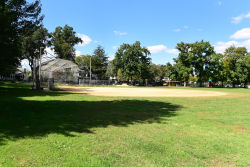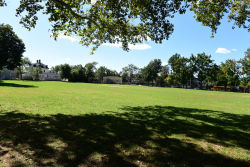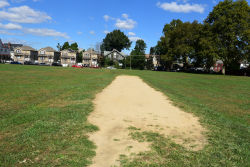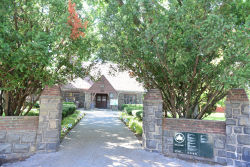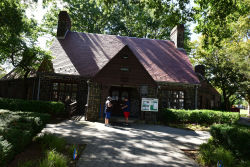Walker Park
Randolph Walker Park
What was here before?
The neighborhood’s history dates to the 1668 plantation of Governor Francis Lovelace (1621-1675). Additional farms were operated in the vicinity by the Cruser, Crocheron, and deGroot families. In 1836 the respected eye surgeon Samuel MacKenzie Elliott bought much of the land along today’s Richmond Terrace and Bard Avenue. For the next 50 years, the area bore the name of Elliottsville. In 1886, when the North Shore Railroad bought the mansion of resident Anson Livingston and opened a station nearby, the growing neighborhood became known as Livingston. From the 1880s until World War I, Livingston was known for its elegance, and Bard Avenue was called the “Fifth Avenue of the Island.”
This property was once the grounds of the Staten Island Cricket and Tennis Club, founded in 1872 as the Cricket and Baseball Club. Originally established in St. George, the club relocated to this site in 1885. Over the years, it featured international matches with England, Australia, and Ireland. The club hosted Mary Ewing Outerbridge (1852-1886), sister of Eugenius, when she brought the game of lawn tennis from Bermuda in 1874. The game caught on quickly, and the first national tennis tournament was allegedly played here in 1880. Many cricket legends have played these grounds, including W.G. Grace (1848-1915), Englishman Colin Blythe (1879-1917), the Indian Prince K. S. Ranjitsinhji XI (1872-1933), and the Australian Sir Donald Bradman (1908-2001).
How did this site become a park?
The Cricket Club grounds were sold to the Staten Island Academy in 1925, and then purchased by the City in 1930. The property was transferred to NYC Parks in 1931 and named Livingston Park. It opened in August of that year with tennis courts and playground facilities. A clubhouse with lockers and showers, a refreshment building, and three tool sheds graced the site. The clubhouse burned in 1932 and was replaced in 1934 by the Tudor-style structure that still stands today.
Walker Park is still extensively used by sporting enthusiasts. The large softball field is also used for football, and the park remains a home to cricket leagues and tournaments. A renovation completed in 2001 revitalized the basketball courts and reconstructed the paths and fencing, and new swings and play equipment were added. General site improvements, including new horticulture, reconstructed play equipment, and updated utilities were completed in 2020.
Who is this park named for?
Initially known as Livingston Park, the name was changed in 1934 to honor Lieutenant Randolph Walker Jr., who died in World War I. Walker was a distinguished member of the local cricket club, and was a good friend of Eugenius H. Outerbridge (1860-1932), the first chairman of the Port Authority. The change was the result of a petition sent to Alderman Dennis V. Corcoran by the officers of the Randolph Walker Post of the American Legion.
Check out your park's Vital Signs
Clean & Safe
Green & Resilient
Empowered & Engaged Users
Share your feedback or learn more about how this park is part of a
Vital Park System

